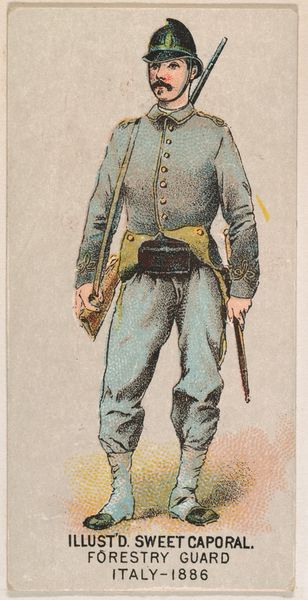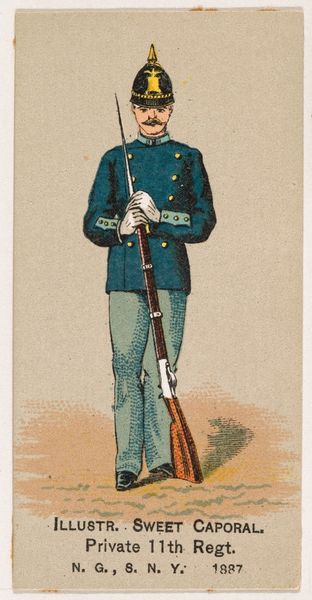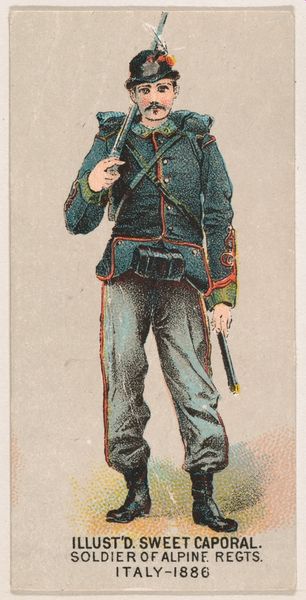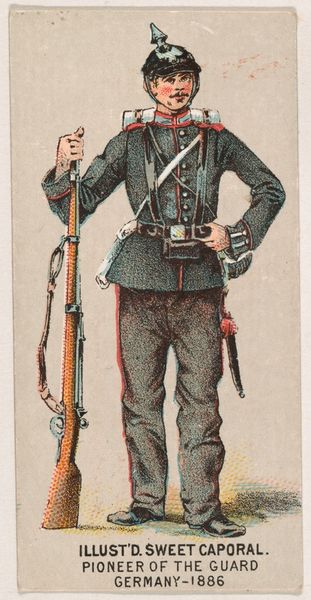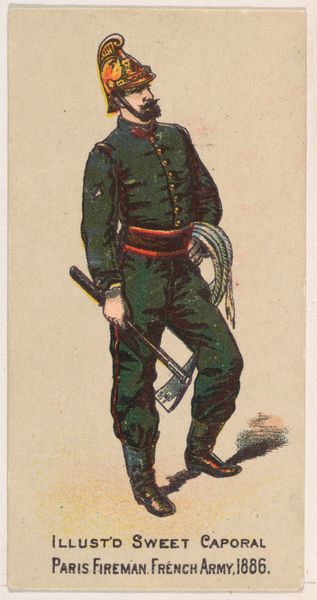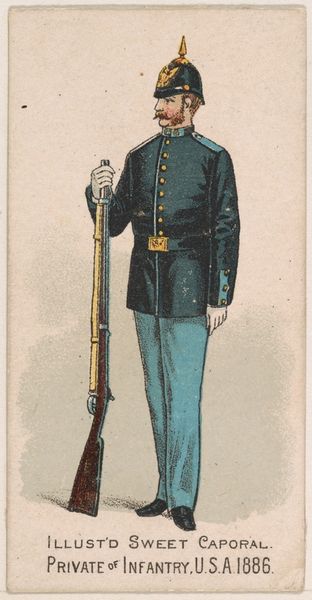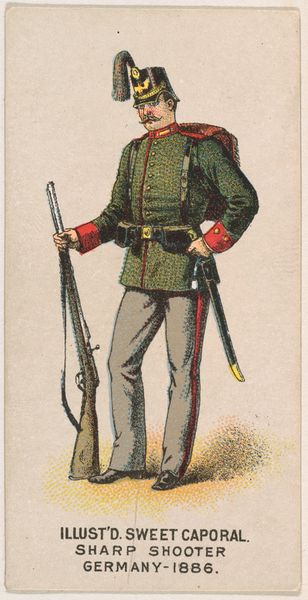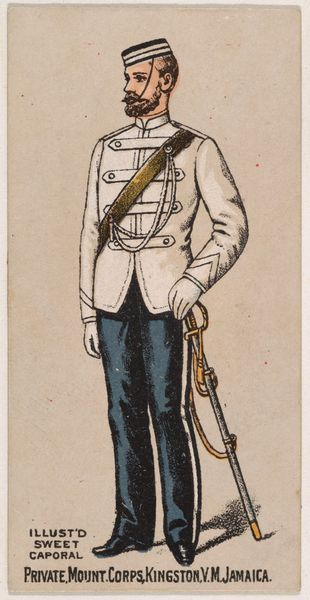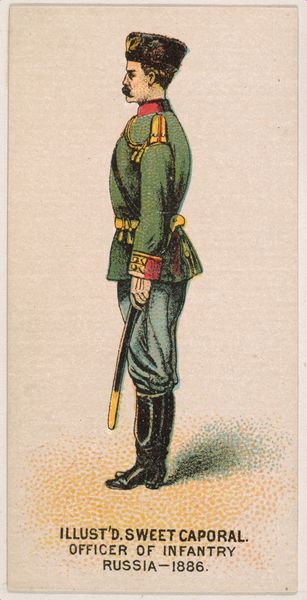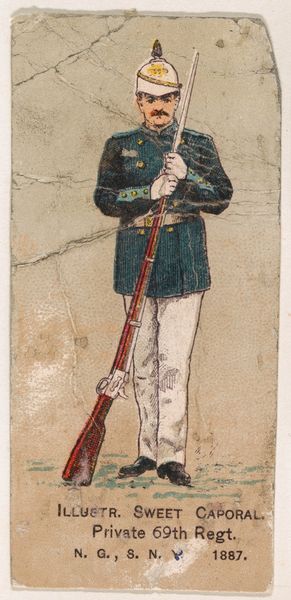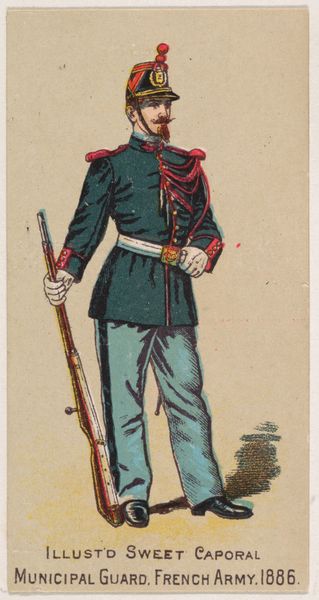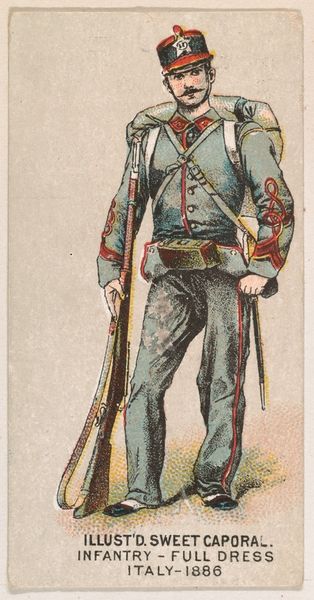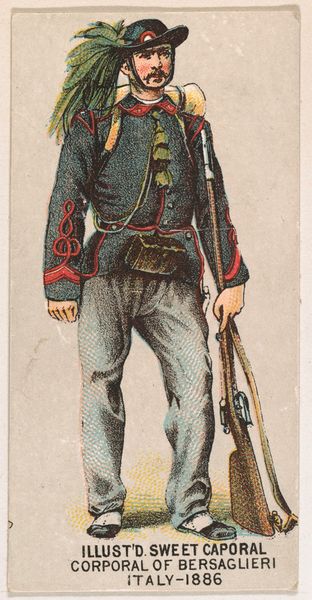
Marine, French Navy, 1886, from the Military Series (N224) issued by Kinney Tobacco Company to promote Sweet Caporal Cigarettes 1888
0:00
0:00
drawing, print
#
portrait
#
drawing
# print
#
caricature
#
caricature
#
genre-painting
#
history-painting
Dimensions: Sheet: 2 3/4 × 1 1/2 in. (7 × 3.8 cm)
Copyright: Public Domain
Curator: Here we have "Marine, French Navy, 1886," a print from the Military Series (N224) by the Kinney Tobacco Company, dating to 1888. It was intended to promote Sweet Caporal Cigarettes. Editor: It’s fascinating how something seemingly mundane, like a cigarette card, offers a glimpse into the imagery of the time. I’m curious, what's your interpretation of this piece? Curator: Let's think about the materials. The mass-produced nature of this card is central. It exists as part of a capitalist structure. The availability of this type of collectible image demonstrates how inexpensive images were becoming and points to consumer culture. The depicted soldier and the colonial project are turned into a commercial spectacle, easily bought, collected, and consumed. How does understanding its purpose influence how we view it? Editor: So, rather than solely focusing on artistic merit or technique, you're drawn to how the image reflects broader socio-economic trends. Like, it's not just a picture of a soldier, it’s about capitalism and commercialization? Curator: Exactly! We can analyze this from many angles, and must consider: who were the consumers of these cards? What was the brand attempting to evoke with imagery of the French Navy? This card would have been incredibly cheap to produce; a flimsy disposable signifier meant to drive brand awareness. Editor: I hadn't considered it that way. Viewing the image as a commodity and understanding the dynamics of production really highlights the context of its creation. Curator: Precisely. Understanding how materials and production intersect is key to grasping its cultural significance. I'm leaving with a whole new view of baseball cards, thanks to our conversation. Editor: Me too. Seeing art as more than just aesthetics—it’s really about understanding the message of material and cultural context.
Comments
No comments
Be the first to comment and join the conversation on the ultimate creative platform.
